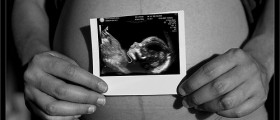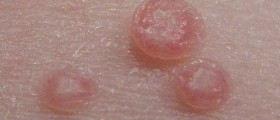Yeast Infection
Yeast infection is one of the most common infections that can occur in the human body. It can appear in women and men, although women are much more susceptible to this disorder. Yeast infection is a condition that is caused by the fungus under the name Candida albicans, and this infection is also well-known under the names fungal infection, thrush, and candidiasis.
The fungus that is responsible for the occurrence of this infection is naturally present in our body, particularly in the mouth and in the genital areas, and when it is kept under control, it is not dangerous. However, for several reasons Candida albicans start to produce themselves in enormous amounts, thus leading to the appearance of the infection.
The most frequent causes for the occurrence of this infection are excessive use of antibiotics, birth control pills, and chemotherapy. Furthermore, the excessive consummation of sugar may also trigger a yeast infection.

Yeast infection can be divided into two types: oral yeast infection or oral thrush, and genital yeast infection or vaginal/penile yeast infection.
Symptoms of Oral Yeast Infection
The oral yeast infection is much easier to be noticed and diagnosed than the genital yeast infection. The oral thrush can appear in men as well as in women, and the most obvious signs of this infection are creamy white lesions that usually can be seen on the tongue, gums, and in the surrounding area in the inside of the mouth.
Sometimes, these white lesions may even bleed slightly. The person that is infected may also have difficulty swallowing or chewing. Furthermore, the feeling that something is stuck in the mouth or the cracking in the corners of the mouth may also occur. Another symptom of oral yeast infection is also the loss of taste and even the loss of appetite.
Symptoms of the Vaginal Yeast Infection
Vulvovaginal candidiasis is the medical term for vaginal yeast infection. The symptoms of this infection usually appear several days before the menstrual period, and the most frequent is a heavy vaginal discharge which is cheese-like. The infected woman may also experience a burning sensation in the vagina or itching and even the pain in vagina, although in many cases, even the pain during sexual intercourse may occur.
Symptoms of Penile Yeast Infection
- It has been also suggested that recurrent BV could be due not only to antibiotic treatments that do not eradicate persistent infection but also to reinfection by sexual partners. Recurrent infections are also probably due to the elimination of the commensal microorganisms in the vagina by the antimicrobial therapy, thereby increasing susceptibility to recolonization by resistant pathogens.
- Lactoferrin, a major defense protein of the innate immune system, is designated by the United States Food and Drug Administration as a food additive that is generally recognized as safe (GRAS). Its abilities in contributing to protect mucosa from infections and inflammations, together with the current pharmaceutical and nutritional merits, have led to Lf being classified as a nutraceutical protein.
- The presence of imbalances in the vaginal composition of the microflora and, mainly, the decrease of Lactobacillus spp. in bacterial vaginosis, aerobic vaginitis, and vulvovaginal candidiasis has given rise to the idea of their replacement in order to restore the natural vaginal flora by using probiotic strains.
- In a randomized, controlled pilot study, it was shown that oral administration in healthy volunteers of the combination of L. acidophilus LMG S-29159 and L. rhamnosus SD5675, together with bovine lactoferrin RCX™, leads to Lactobacillus spp. vaginal colonization. Subsequently, a double-blind, placebo-controlled randomized study on the effects (modification of the Nugent score, i.e., a Gram stain scoring system for vaginal swabs to diagnose BV) of the oral administration of such lactic acid bacteria and lactoferrin combination in women with intermediate vaginal microbiota confirmed that, in the presence of bovine lactoferrin, both L. acidophilus LMG S-29159 and L. rhamnosus SD5675 are able to colonize vagina.
- In the first RCT, the effectiveness of the Respecta® complex was tested as adjuvant therapy to metronidazole in adult women with recurrent BV. The results showed a significant regression of the Nugent score and resolution of BV symptoms both during the induction phase (oral metronidazole 500 mg twice a day for seven days plus Respecta® complex for 15 days) and in the maintenance phase (oral Respecta® complex for 10 consecutive days starting at first day of menstrual cycle, for six months).
The most common symptoms of penile yeast infection are itching and pain in the area around the penis and white discharge from the penis. In many men, cracked skin is also a sign that they are infected by yeast infection. As in women, the infected men may also have painful sexual intercourse.










_f_280x120.jpg)






Your thoughts on this
Loading...